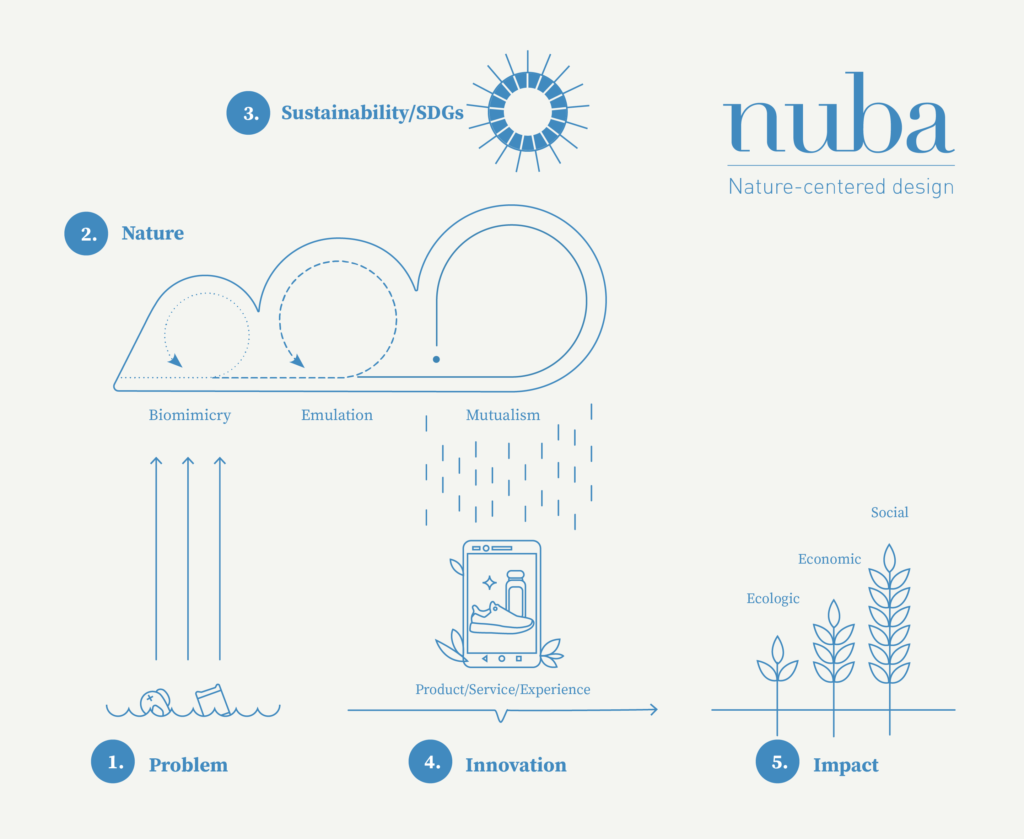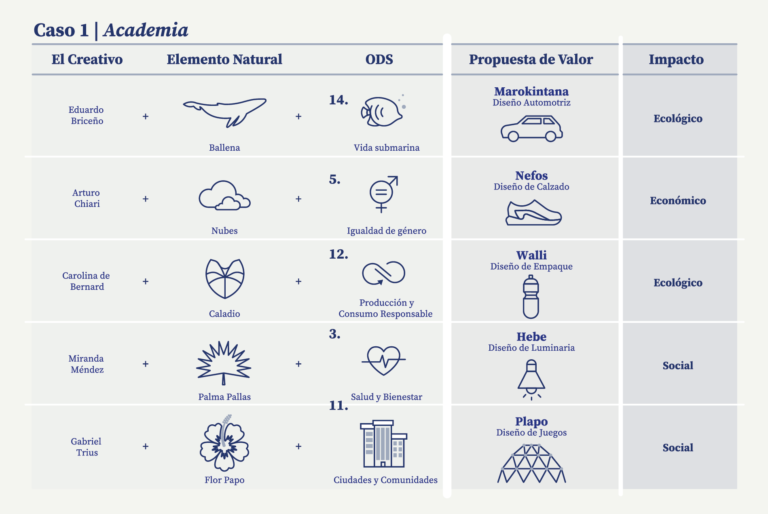Methodology to design sustainable futures starting from nature as a reference of innovation, leading creative young people towards an interdisciplinary connection with governmental, private and public sectors from the academy, provoking a sense of belonging and responsibility.
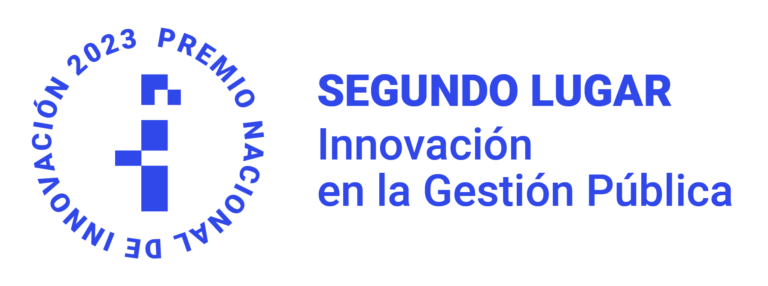

Second place winner of the National Innovation Award 2023, in the category of Innovation in Public Management. Organized by the National Secretariat of Science and Technology of Guatemala.
Keywords
- Biomimicry
- Sustainability
- Co creation
Nature as a reference for innovation
The starting point for the right balance search
Observing living ecosystems as references of innovation is an act that not only design should consider but society itself; the precise intelligence in each of them reflected in cyclical processes, coexistence and adaptability show a perfect model of sustainable strategy, away from collapse or excessive abuse of resources.
This dynamic of inspiration, analysis and imitation of nature to solve human problems is the science known as biomimetics, bio of “life”, and mimetics of “imitate” (Collado, 2017), which aims to improve the quality of life and socioeconomic sustainability; to consider it is to bring to the table solutions based on a complex system (Huepe, 2018) that is the interaction of many elements to generate something more than the sum of them thanks to a collective dynamic so that in the short term it may not be visible, however in the future, it shows a pattern of collective impact that is reflected in an optimization of functioning as a society and living ecosystem. Our society is a complex system that is worth analyzing from its organization, mobility and coexistence.
Explanatory video on NUBA methodology (in Spanish).
Nature-centered design
Nuba is a methodology based on biomimicry as a reference of intelligent design and aligned with sustainable development objectives for the co-creation of strategies, products and services, impact solutions to local problems. Its formula considers 3 important and consistent factors that are addressed with exact sciences and global initiatives:
- Local ecosystem: problems to be selected and evaluated.
- Global impact: sustainable development objective, its role and vision.
- Nature: inspiration benchmark to emulate functionality.
The objective is to show an alternative route to generate conscious value proposals that bet on an ecological, economic and social impact through design.
Ecosystems are ourselves, with the planet and with our inner selves.
(Dueñas, 2018)
Considering sustainability as a destination is key to talk about a design with purpose, which proposes a cyclical solution, not just recycling but a return of goods with society and its natural environment, which leads to a commitment to accelerate progress and global development (United Nations program, 2021) that can be visible in its ecological, economic or social impact.
Symbiosis
Nuba, requires two natural elements to start its Biomimetic process to create possible design solutions, as a result of the biological interaction of these two elements, both natural elements are perfect ecosystem references suitable to create an intimate association between them from the observation of self-discovery (me, as a creative) and the environment (nature) to generate a creative symbiosis.
Finally, this proposal evolves to a model of impact, when a sustainable development objective is integrated, reflecting the commitment of the creative industry to the challenge of solving local and global problems. Considering sustainability as the third axis within the formula is key to talk about a design with purpose, which proposes a cyclical solution (production, use, disposal), not just recycling but a return of goods with society and its natural environment, which leads to a commitment to accelerate progress and global development (United Nations program, 2021) that can be visible in its ecological, economic or social impact. The 17 Sustainable Development Goals offer purposes that give meaning to responsible design and a global metric to measure the ecological, economic or social impact of each creative proposal, as well as its contribution to the 2030 agenda proposed by the United Nations.
Biomimicry


Design with purpose
Nuba, in addition to promoting an interdisciplinary connection for the analysis and reflection of local problems, between governmental, private and academic sectors, also aims to demonstrate the value of design as a key element for the approach of strategies, development plans and competitiveness as a country and region. Therefore, it suggests to the creative and / or future professional, an approach through research on their environment from social, political and economic perspectives.
Talking about investment for a competitive future and for the development of a country, is an idea linked to the academy, for its potential as a hotbed of ideas and local talent. The challenge of achieving a sustainable future for Latin America and the Caribbean must involve the young population through educational systems that promote learning and the practice of design with an international focus.
Visualizing oneself as a key actor from the classroom is an empowering action that supports an education with values and a purpose committed to designing holistic solutions; in this way, the proposals generated can not only be reference models from a technical design perspective, but also from development perspectives.
Methodology implementation
Nuba, in addition to promoting an interdisciplinary connection for the analysis and reflection of local problems, between governmental, private and academic sectors, also aims to demonstrate the value of design as a key element for the approach of strategies, development plans and competitiveness as a country and region. Therefore, it suggests to the creative and / or future professional, an approach through research on their environment from social, political and economic perspectives.
Talking about investment for a competitive future and for the development of a country, is an idea linked to the academy, for its potential as a hotbed of ideas and local talent. The challenge of achieving a sustainable future for Latin America and the Caribbean must involve the young population through educational systems that promote learning and the practice of design with an international focus.
Visualizing oneself as a key actor from the classroom is an empowering action that supports an education with values and a purpose committed to designing holistic solutions; in this way, the proposals generated can not only be reference models from a technical design perspective, but also from development perspectives.
Territory of abundance and creativity,
an analysis towards the interior of the Panamanian territory from a creative perspective
The ISTHMUS School of Architecture and Design, a higher education institution accredited by the National Council for University Evaluation and Accreditation of Panama, has been the scenario to generate creative proposals inspired by the nature of the territory, to solve problems facing the country. Knowing through observation and research, the problems and wealth (economic, cultural, natural) of the territory, was the key point to initiate a diagnosis of the real demands facing Panama. Therefore, the challenge of this primary research for the workshop had two objectives: problem research and bioinspiration.
HEBE
Luminaire design for the mental health and well-being of Panamanians.
SDG No. 3: Health and Well-Being.
The mental health of the Panamanian population, like that of the rest of the world, is strongly affected by chronic daily stress; however, this problem does not receive much attention despite being the trigger for mental health disorders in its population. The psychological team of the Panamanian Ministry of Health (MINSA) indicates that: relaxation techniques known as active breaks are recommended to relieve stress and improve the health of Panamanians (Sanjur, 2020).


Pallas palm.
Miranda Méndez, generated a design proposal to improve the mental health of the Panamanian population, being aware of the wear and tear that current stress can cause and, therefore, deteriorate the quality of life in their environment.
HEBE is a proposal for a luminaire that aims to reconnect people to a slower and calmer pace to reduce stress levels in work spaces. Inspired by the movement and leaves of the pallas palm, its fluid movements that converge with the light are breathing patterns to relax the observer.
HEBE luminaire display circuit in enclosed spaces with high pedestrian traffic.
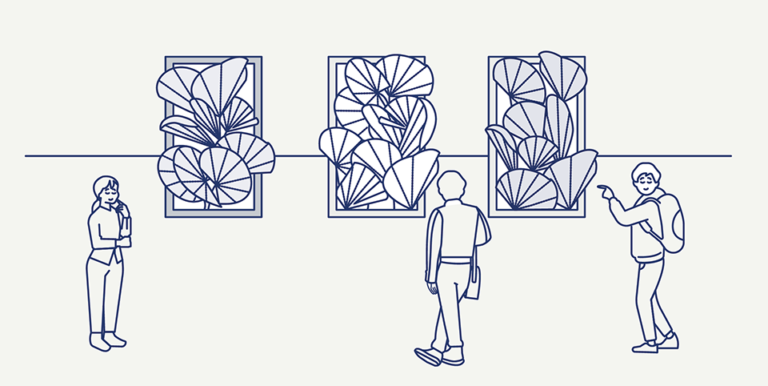

PLAPO
Playground design for inclusive cities
SDG No. 11: Sustainable cities and communities
Movement is a vital action for the self-esteem and mental health of every person. According to the 2019-2024 government strategic plan of Panama, the social development axis has among its objectives to strengthen community sports and therefore the participation of communities to promote sports and recreation (Government of Panama). To talk about recreational spaces in coastal areas of Panama is to propose an investment for its population to activate common areas and reinforce creative and cooperative play among children.


Papo flower.
Gabriel Trius, designed a playground intervention for public spaces in the coastal areas of Panama. Aligned with the Land Use Plan and the Government’s Strategic Plan, his objective was to propose an improvement to the recreational infrastructure. PLAPO is a game proposal inspired by the papo flower, its objective is to improve the experience of recreational spaces in different communities to promote the recreation of children and young people; it is not possible to talk about wellbeing without having a city design that allows its population a healthy mobility and to achieve this, design is crucial.
Each of the proposals generated were the reflection of a vision not only conscious but committed of future designers to contribute to a development for their country; aware of their context from the economic, environmental, political, technological and commercial to communicate through design real solutions for a population.
Outdoor playground, PLAPO.
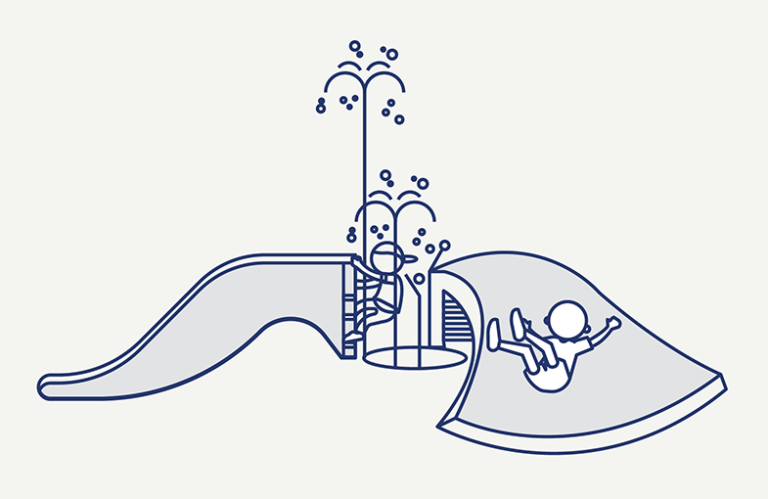

NUBA has been a methodology created as a proposal in itself of responsible design; its objective has been to activate a commitment in the academic formation of future design professionals, considering the problems that we as humanity face in the present and that we must solve from the root. Starting from nature as a point of inspiration and reference to emulate its functionality is nothing new; in fact it is more a way to return to that ancestral practice necessary in our creative process.
Each of the proposals created so far with the methodology has been the reflection of a conscious and committed vision of future designers to contribute to the development of their country, considering economic, environmental, political, technological and commercial aspects to communicate through design real solutions for the population, demonstrating that the diversity identified in the discipline of biology, can transcend the creative.
To provoke a sense of belonging and responsibility with the present in order to broaden the criteria for designing the future as a living ecosystem.
International exhibition
In November 2022, NUBA was selected for the scientific poster exhibition at the 1st International Congress of the Arxiu Valencià del Disseny. The theme of this congress was about design in the framework of circular economy.
References
Luzardo, A., (2017). “Las industrias culturales pueden fortalecer el rol de América Latina en el mundo”, Nueva Sociedad. Extraído de https://nuso.org/articulo/las-industrias-culturales-y-la-economia-naranja-pueden-fortalecer-el-rol-de-america-latina-en-el-mundo/
Walker, B., (2015). “What makes organizations more creatively competitive”, IDEO. Recuperado de https://www.ideo.com/question/how-can-design-help-organizations-be-more-creatively-competitive
Collado, J., (2017). “Aprender a sentir, pensar y actuar con la naturaleza”, TED TALKS. Recuperado de https://www.youtube.com/watch?v=B4x1GyGyMFo
Huepe, C., (2018). “Por la razón y la Ciencia”. Recuperado de https://www.youtube.com/watch?v=utYNDILhHZU
Aveni F., (2017). “Observadores del cielo en el México antiguo”, México, Fondo de Cultura Económica., PP 13
Druyan, A,. Soter, S. (productores). (2020) Cosmos, mundos posibles [Documental]. EU.: Six Point Harness
Ak’abal, H., (2019). “Remiendo de media luna”, Guatemala, Guatemala., Maya’ Wuj, pp. 77
Dueñas, Jani (2018). Por la razón y la ciencia. Recuperado de https://www.youtube.com/watch?v=utYNDILhHZU
Programa de Naciones Unidas (2021). Objetivos de Desarrollo Sostenible. Extraído de https://www.undp.org
Sanjur, D. (2020). El estrés laboral y la pausa activa. Extraído de https://www.senacyt.gob.pa/el-estres-laboral-y-la-pausa-activa/
Gobierno de Panamá (2019) Plan Estratégico de Gobierno 2019-2024 de Panamá. Extraído de: https://observatorioplanificacion.cepal.org/es/planes/plan-estrategico-de-gobierno-2019-2024-de-panama
